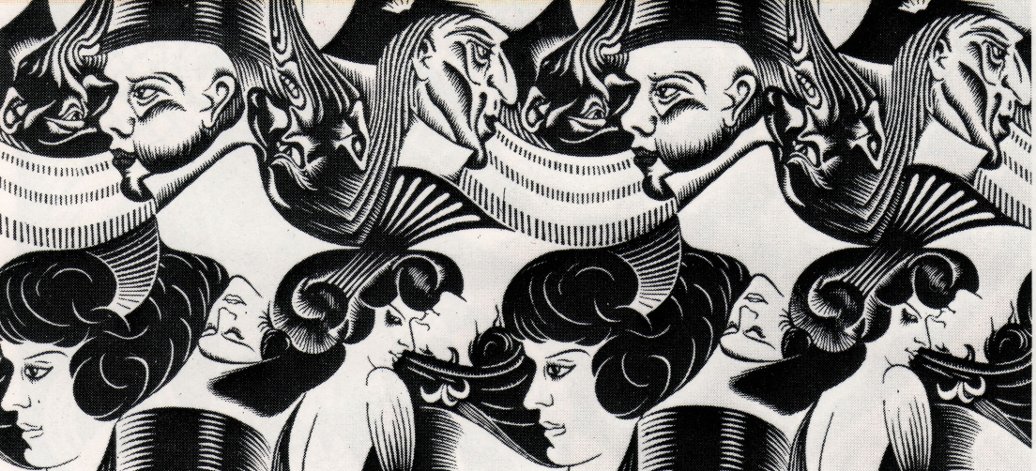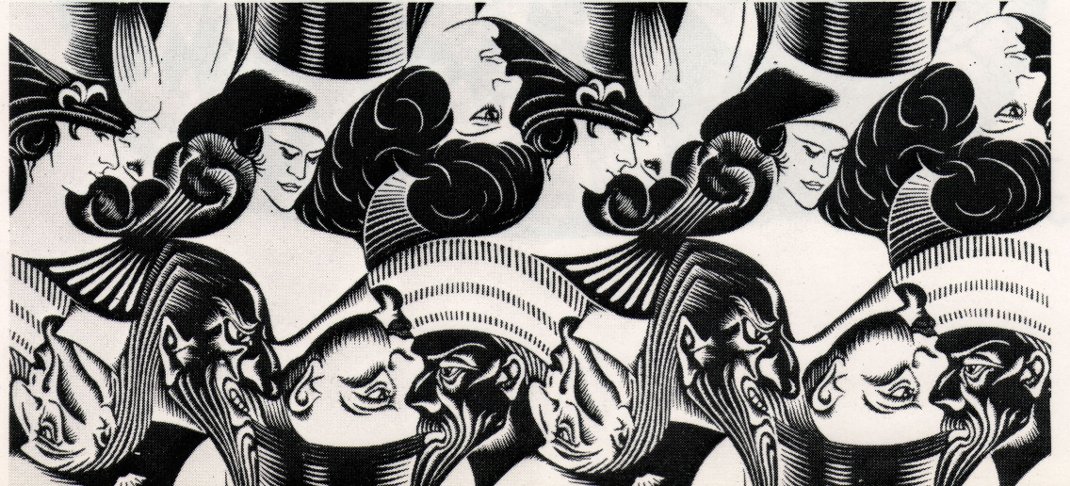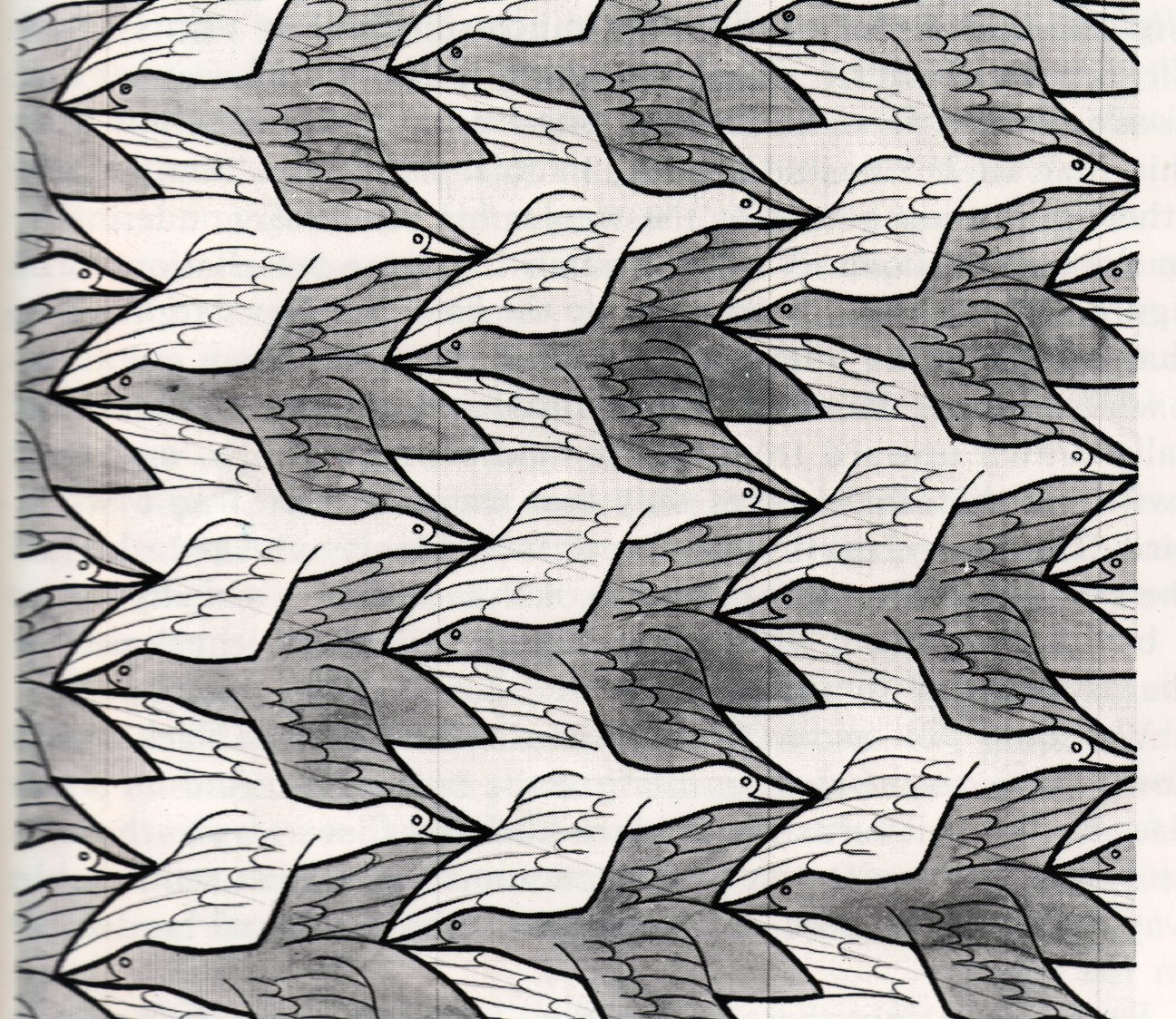|
8. Escher's Tessellations of the plane
No other theme has been as popular in Escher's work as the periodic drawing division, which is related to the mathematical concept of tesselation of the plane.
He himself was saying that: "it is the richest source of inspiration that I have ever tapped, and it has by no means dried up yet". Here is one of his first attempts:

He had a predisposition to the discovery and application of the priciples of tessellation, as it can be seen from early works (while he was studying under de Merquita in Haarlem). The idea of covering the entire surface with figures was not due to the influence of his mentor. The most detailed and fully developed production from this period is the woodcut "Eight Heads" (1922). Eight different heads are shown, four of them right way up, and four upside down. The heads have a theatrical air about them, false, unreal, "fin du siècle".
Then, in 1926, having some acquaintance with the Alhambra on the occasion of a brief visit, Escher was impressed by the Moorish frescos, although not all of them had figures that are true tessellations. He made his own sketches, as one can see in the next figure: 
He wasn't satisfied by his results, so for 10 years he wasn't interested anymore in this topic. But in 1936, accompanied by his wife, he paid another visit to the Alhambra. For the second time he was impressed by the enormous possibilities lying in the division of a plane surface. He made copies, together with his wife, of the Moorish tessellations, and on his return home he studied them closely. He read books about ornamentation, and mathematical treatises he could not understand, although he liked and used the illustrations they had. He build his own system and wrote about it in 1941 and 1942. Principles of Plane Tessellations
In the next figure, there is a simple design. The whole surface is covered with equilateral triangles. If we shift the whole plane over the distance AB, it will cover the underlying pattern once again. This is a translation of the plane. We can also turn the duplicate through 60 degrees about the point C, and we notice that again it covers the original pattern exactly. This is a rotation. Also if we do a reflection about the line PQ, the pattern remains the same.
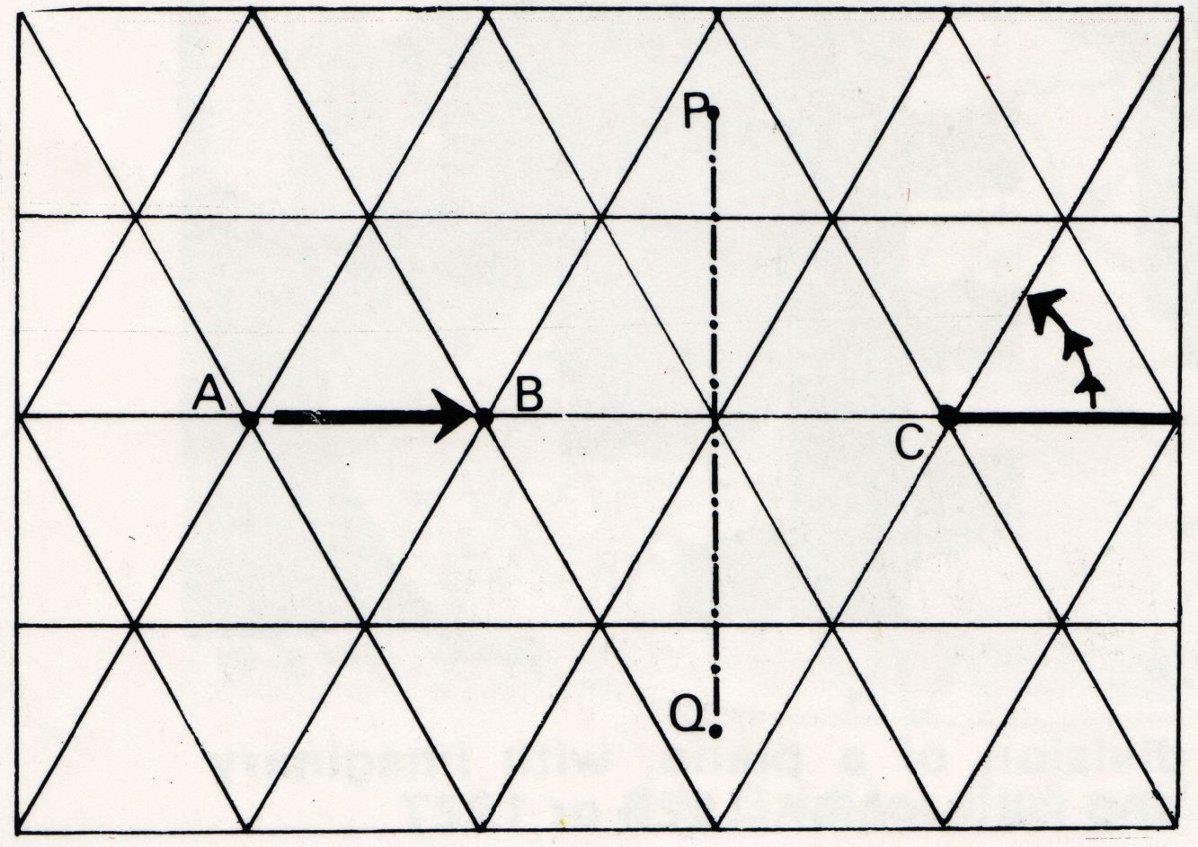
A pattern can be made to map to itself by means of translation, rotation, reflection and glide reflection. There are 17 different groups of patters. Each groups admits only some kinds of shifts whereby they map onto themselves (some admit only translation, others translation and reflection etc.). Escher discovered all these possibilities without any previous mathematical knowledge. A particular characteristic of Escher's tessellation is that he chooses motifs that represent concrete objects or beings. Making a Tessellation and a MetamorphosisIf you want to play and make your own tessellations, here is a great site: www.tessellations.org.
We will show you here the steps done by Escher to create one of his "Metamorphosis". First note that for Escher tessellations were just a means to an end, they were never produced as a main theme. They were included in different prints. The most use of periodic surface-division is found in two themes: metamorphosis and cycles. The metamorphoses consist of abstract shapes changing into sharply defined concrete forms, and then changing back again (a bird changing into a fish, a lizard into a honeycomb). Some examples are: "Metamorphosis I" (1937), "Day and Night" (1938), "Metamorphosis II" (1939). But most of the prints display not only metamorphoses, but also a cycle (like "Cycle" (1938)).
Escher explains in his book "Plane Tessellations" (1958) the way how he brings a metamorphosis into being. We will use his "Regular division of the plane I" (1957) to explain all the steps. 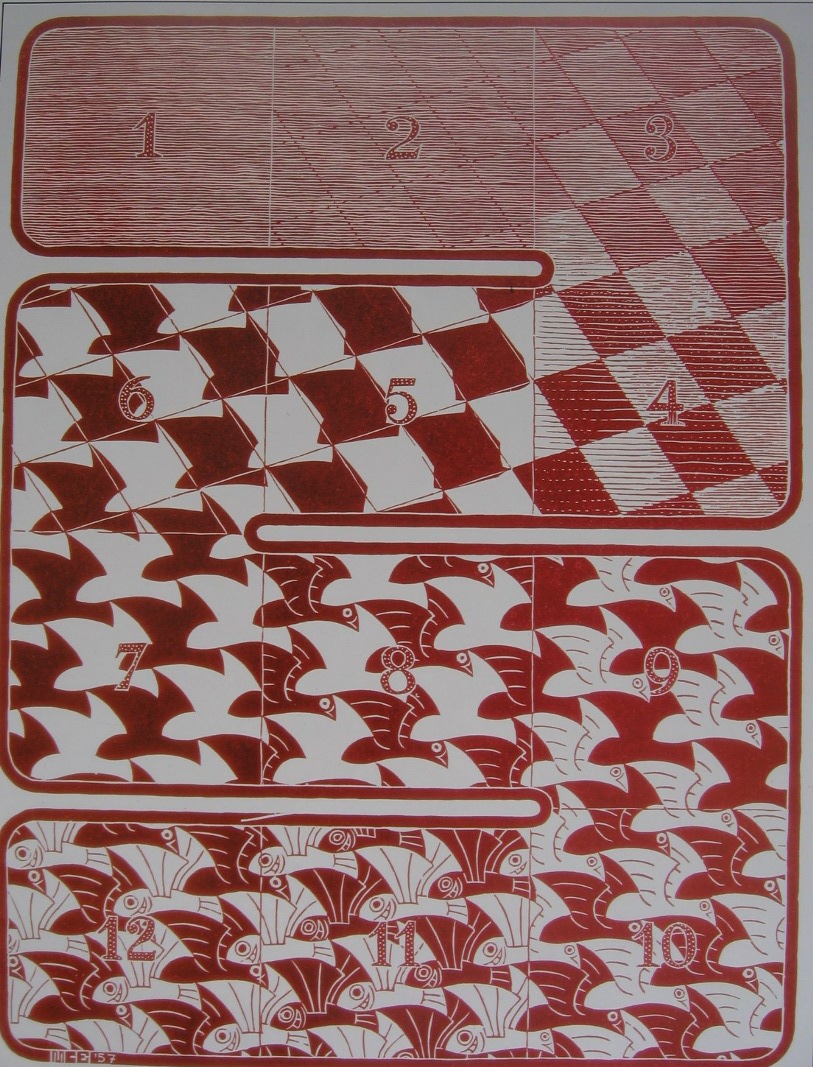
A similar, but more complex process, is found in "Metamorphosis II", which is the larges Escher print (20 cm high, and 4 meters long) - see above. Other examplesHere is a tessellation, which was used in his most famous wood-cut, "Day and Night" (1938).
And another tessellation, which was used in "Cycle" (1938) - there is a metamorphosis from a human figure to geometric pattern, which changes to a diamond form, and then the diamonds go to make up a block that is used as building material and thereupon, within some secret chamber of the house, the lifeless shapes probably change into the cheerful young fellow:
Finally, his famous "Angels and Devils" (1941), which was also done in the Poincaré disk:
|
